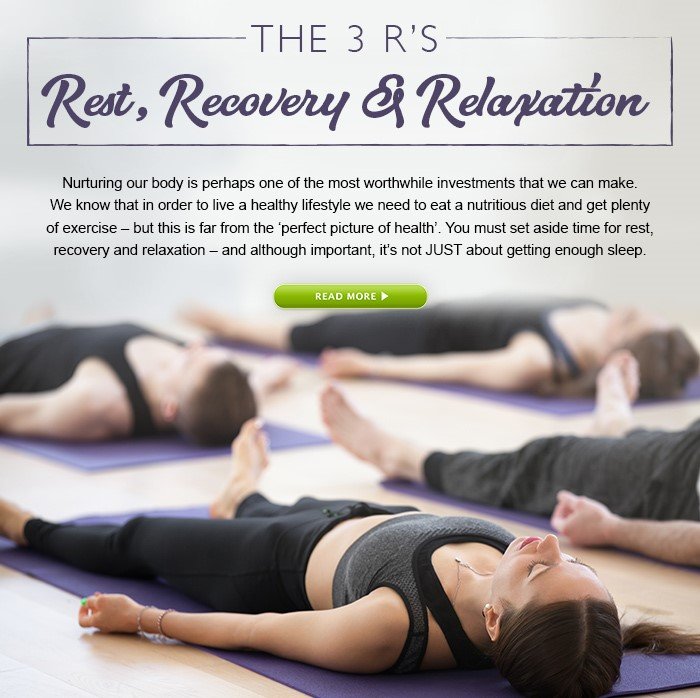 Nurturing our body is perhaps one of the most worthwhile investments that we can make. We know that in order to live a healthy lifestyle we need to eat a nutritious diet and get plenty of exercise – but this is far from the ‘perfect picture of health’. You must set aside time for rest, recovery and relaxation – and although important, it’s not JUST about getting enough sleep.
Nurturing our body is perhaps one of the most worthwhile investments that we can make. We know that in order to live a healthy lifestyle we need to eat a nutritious diet and get plenty of exercise – but this is far from the ‘perfect picture of health’. You must set aside time for rest, recovery and relaxation – and although important, it’s not JUST about getting enough sleep.
Resistance training leads to the break down and repair of muscle tissue. This is all part of the natural process towards building stronger muscle, and healthier bone and connective tissue. However, if adequate time is not given to allow for muscle repair, then improvements in muscle size and strength may not occur. Not to be forgotten in this process is variation of training and appropriate progression (or progressive overload).
Nutrition also plays a crucial role in the recovery of tissue post exercise. Nutrition ideally should be tailored depending on the individual and the exercise undertaken, however consideration should be based around 3 main goals: to replenish fuel (glycogen) stores, consuming protein to assist with muscle repair and synthesis and restore fluids and electrolytes lost in sweat. Delivering nutrients such as carbohydrates also have a positive effect on the immune system by reducing the rise in stress hormones and may reduce the degree of exercise-induced immunosuppression1. Upon cessation of exercise, white blood cells move into the spleen, lung, bone marrow and lymph nodes which ensure regulation of immune response2. Time for recovery is important to counteract immunosupression and restore immune function after exercising to reduce likelihood of sickness.
Stretching is another common tool used for muscle recovery. The research literature on the clinical effectiveness of stretching is not overly clear as its difficult to quantify and the perception of intensity and pain are vastly individual. Stretching helps by increasing parasympathetic nervous system activity (body homeostasis and digestion) which facilitate by counteracting the effects of the sympathetic nervous system (fight or flight). Although stretching temporarily impairs blood flow, blood flow is increased after the stretch is complete, assisting with circulation.
Heat and cold therapies, massage, hydrotherapy and foam rolling as well as compression garments have all also been shown to reduce muscle soreness. However, some research suggests that some of the benefits felt by these therapies may be due to the placebo effect, rather than actual physiological changes. More research is required around these methods.
Relaxation is often regarded as something we “do not have enough time for”. However, relaxing is important, particularly for psychological health. The way we ‘relax’ can mean something different for everyone. It might be going for a walk outdoors, practising yoga or meditation or simply sitting quietly and reading a book. Whatever your outlet is, it should not be overlooked.
Make sure you program in rest days, even if you feel like you don’t need it. It is important that you give your body adequate time to recover, and this is not a one size fits all scenario. For some, one day is adequate, however it is important from both a physical and psychological standpoint to take more if you need to.
Pip Tockuss
B.Clinexerphys, (AEP, Aes, ESSAM)
Accredited Exercise Physiologist
References:
- Sports Dietitians Australia. (2012, June). Recovery. Retrieved from https://www.sportsdietitians.com.au/wp-content/uploads/2015/04/120628-Recovery_SD-version.pdfcontent/uploads/2015/04/120628-Recovery_SD-version.pdf
- Ingram, L. A., Simpson, R. J., Malone, E., & Florida-James, G. D. (2015). Sleep disruption and its effect on lymphocyte redeployment following an acute bout of exercise. Brain, Behavior, and Immunity, 47, 100-108. doi:10.1016/j.bbi.2014.12.018
